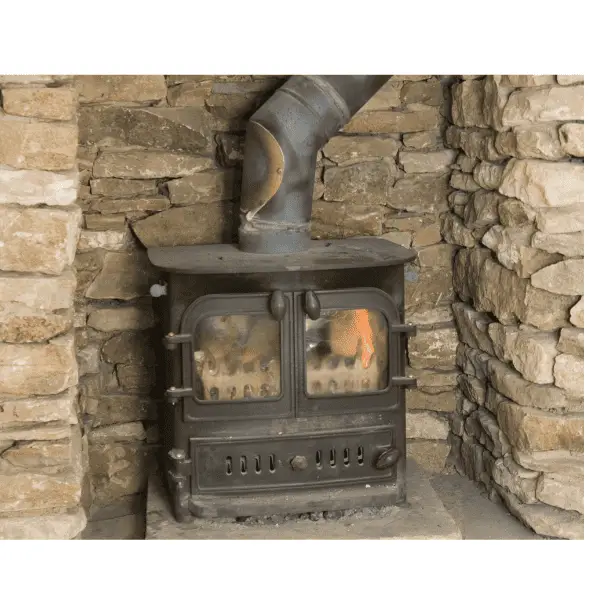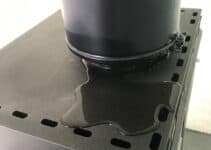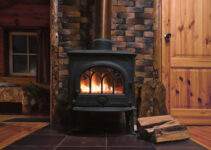In recent years, wood-burning stoves have grown in popularity. As the weather warms up and we return to our gardens, many individuals are considering outdoor wood burners to fuel their summer fires.
However, you should take a few precautions when storing a burner outside to keep it operating safely and efficiently.
Preventing rust from forming is a key part of maintaining an indoor stove, but it is even more important when dealing with chimeneas and other outdoor stoves and fireplaces.
So why is my log burner going rusty? Your log burner may go rusty because humidity, wind, and rain are exposed, oxidation speeds up, especially when temperatures rise. While stainless steel and more recent kinds of stoves are considerably less likely to rust than earlier versions, prolonged inactivity and excessive moisture can pose problems in the long run and necessitate prompt action to prevent irreversible harm to your stove.
How can you keep your wood burner in good condition over the summer, and what steps should you take to remove rust from your wood burner.
How Do You Stop A Wood-Burning Stove From Rusting?
Woodburners rust for two main reasons: moisture and improper maintenance. Over time, ferrous metals corrode when exposed to air and moisture. Oxidation can be set up on your cast-iron stove if it sits about collecting moisture and isn’t used often.
Rust is the product of a chemical reaction in which oxygen and metal combine to form ferric oxide.
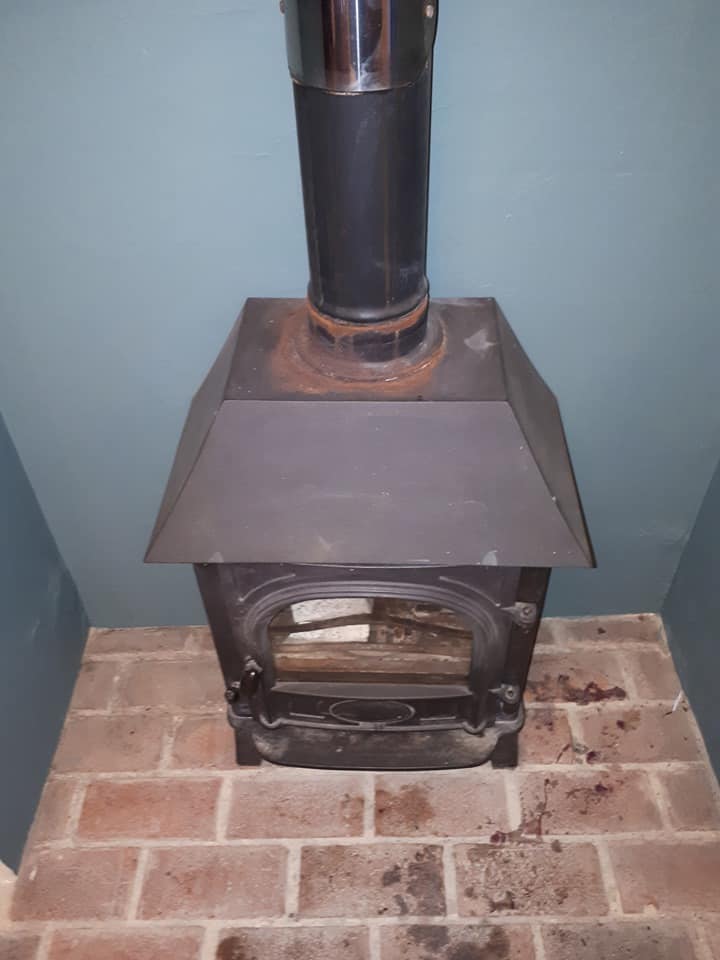
Wood burners may be kept free of rust by being used frequently and stored in a dry place. We’ll look at some conditions that can be met in your stove that will allow rust to form.
We Get Rain In The Summer
When it rains, water will eventually trickle down your chimney. In the course of the winter, this occurs frequently. However, as soon as your stove is lit, the rainwater evaporates and returns up the flue, preventing any harm.
The summer months are prime troubleshooting times when you are less likely to use your stove. In a summer shower, rainwater could pool within your stove system and remain there for a long period.
There are a handful of precautions you may take to prevent wood burner rusting from precipitation. To begin, you may install a chimney cowl to reduce the quantity of precipitation that enters your flue.
Our second piece of advice is to occasionally fire your stove, even if it isn’t cool outside. During the summer, a few little fires will keep your appliance dry and help remove any moisture that may have gotten inside it.
Condensation
Condensation is the most common source of moisture for your wood burner, second only to rainwater. Your wood burner, a sizable piece of metal, is certainly one of the coldest objects in your house when it isn’t lighted.
Water dripping from the outside of your wood stove is a sign that the air in your home is too humid, that your home has poor ventilation, or that you are doing things like drying clothes on radiators, which adds a lot of moisture to the air.
The chilly surface of your stove causes the moisture in the air to cool, condense, and settle as water, causing condensation and subsequent water buildup.
To prevent rust from condensation on your stove, you can take the same precautions you would prevent rust from moisture in the air. Such as:
- The practice of opening windows regularly.
- Utilizing ventilation fans for smoke removal.
- Use a dehumidifier.
- The use of radiators for clothing drying is discouraged.
- Having high humidity levels is a given in certain properties.
- Use a dry towel to rapidly wipe away any water that condenses on your wood stove if you see it.
The potential for harm is reduced if you do this.
Dry, Old Air
Damage from corrosion can develop if you don’t use your stove for a long time. If your stove lacks ventilation, the stagnant air inside could eventually corrode the metal parts.
The situation becomes catastrophic if there is a lot of moisture in the air.
When the stove isn’t used for a while, leaving the door cracked can help alleviate the issue. Doing so may promote ventilation and airflow within your stove, which will help maintain a healthy, clean environment within the appliance.
Furthermore, as was previously said, rust and corrosion can be prevented by igniting your stove occasionally, even when there is no immediate need to do so.
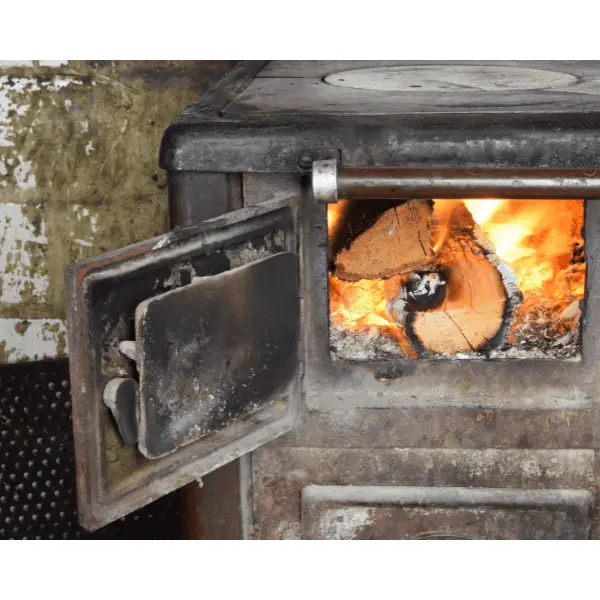
Other Reasons
Rust can also be caused when people use the stove for storage. It’s tempting to adorn your wood burner when it’s not in use. We’ve seen things placed on top of unlit wood stoves, including vases with flowers, metal plant pots, and other decorations.
Unfortunately, the likelihood of corrosion is amplified by anything restricting airflow to your stove’s surface (especially if it contains moisture).
We recommend not adding any decorations to your stove, no matter how nice they might look.
How Do You Restore A Rusty Log Burner?
The first thing to do if you notice rust on your wood burner is to determine if it is only superficial or has progressed to the point where it cannot be repaired.
You can tell if your wood burner is in good shape by seeing if the rust can be scraped away in stages or by tapping it with a small mallet. If that’s the case, the rusting is much deeper than it appears on the surface, and you’ll probably require professional aid to fix it.
When inspecting the rustiness of your wood-burning stove, wait until it has cooled down before donning protective gear like gloves and eyewear. To clean your wood burner, use a wire brush or a sandblaster to remove the rust, then work the rust loose with lots of elbow grease before wiping away the flakes with a moist towel.
Scrubbing your stove will reveal the iron or steel beneath, changing its color from red to black or brown. To finish, use a dry cloth and a light, circular motion to apply polish. When the first coat has dried, apply a second to guarantee that your log burner is well-coated and no further rust will form.
Wood Stove Rust Removal Techniques
Let the stove cool down first. In no circumstances is it safe to remove rust from a hot stove. Wire wool can safely and effectively remove all rust from the stove, provided it is used with care and in small, gentle, circular strokes.
Use a moist towel to wipe down the stove to eliminate any rust residue thoroughly.
After the stove has dried, you can repaint it using stove-specific paint. Use only stove paint, as it is designed to withstand extreme heat. You’ll likely need to paint the stove twice. If you apply a second coat, wait until the first one is dried.
You should only relight your stove in line with the paint’s directions. Remember that rust is generated when oxygen combines with metal.
Thus any attempt to eliminate it will also damage the metal’s original shine. Embrace that you will be removing the paint, and then concentrate on restoring the surface to the best of your ability.
Always remember that most ranges include a flat, black enamel finish. Some others will look shiny or metallic. Choose a paint that is safe for use on your stove. Finding the paint made specifically for your stove may be necessary if you need an exact match.
Stove paint and wire wool, useful for removing rust from wood stoves, may be found at any home improvement store, hardware store, and even some grocery stores.
Is It Safe To Use A Rusty Stove?
Maintaining your outdoor burner properly is easier than you think. At the outset, let’s briefly discuss why an outdoor wood burner that has begun to rust poses a significant risk to public safety.
Rust forms from iron or steel reacting with oxygen and water; this reaction is magnified in cast-iron stoves.
Even though it’s easy to save a rusty wood stove, you should do so as soon as possible to avoid the major problems associated with a rusty stove, such as the deterioration and production of microscopic holes in the appliance.
When heated, a corroded burner could fail, releasing deadly levels of smoke or possibly igniting spontaneously. You don’t want to ignore or toy with Rust, so use our tutorial to clean a rusted outdoor wood burner properly!
How To Clean A Rusty Log Burner
Cleaning, repairing, and maintaining your stove regularly throughout the year will prevent many problems from arising later.
Corrosion and rust are, unfortunately, possible. Some of the reasons why a wood stove rusts will be discussed below. Discovering the root cause of the rust on your wood-burning stove will allow you to take steps to prevent additional corrosion.
Maintaining A Wood Stove And Avoiding Corrosion
The possibility of rust returning to your wood burner can be prevented or reduced by adhering to the aforementioned steps once your stove has restored its former splendor.
This includes but is not limited to the following:
- Turning on the wood stove regularly all year round.
- Installing a cowl over your chimney or flue might help prevent water damage.
- Don’t leave damp garments on a radiator; dry them in the fresh air.
- Make sure there is plenty of airflow in and out of your home by opening windows frequently.
- If the air in your home is particularly humid, you may consider investing in a dehumidifier.
- The stove should have its door propped open when it is not used.
- Put only food and water on the burner and nothing else (particularly nothing moist or metal).
How to Remove Rust From Wood Burning Stove
To remove rust from a wood-burning stove, follow these steps. First, ensure the stove is cold and disconnected from any power source. Use a wire brush or steel wool to scrub off loose rust and dirt from the affected areas.
- Apply a commercial rust remover or create a homemade solution by mixing equal parts vinegar and water.
- Apply the solution to the rusted areas using a sponge or cloth, and let it sit for 15-30 minutes to allow the rust to dissolve.
- Scrub the area again to remove any remaining rust. Rinse the stove with clean water and dry it thoroughly.
Rust Inside Wood Stove
For more stubborn rust inside a wood stove, you can use a rust converter, which chemically converts the rust into a stable compound. Follow the instructions provided by the rust converter manufacturer for application and removal.
Once the rust is removed, apply a high-temperature paint or stove polish to protect the surface and prevent future rusting. Regular cleaning and maintenance will help preserve the stove’s appearance and functionality.
Wood Burner Rusting
It’s not the world’s end if you notice some rust on your wood stove. With any luck, you’ll be able to put the advice above to use and avoid future difficulties of a similar nature.
Meanwhile, you may ask how to remove rust from a wood stove effectively and light it again. Get your stove looking like new by following the procedures provided in this article.
